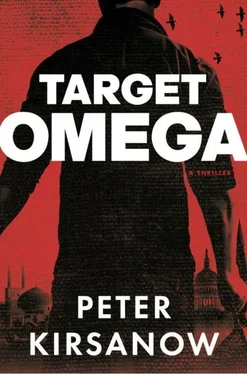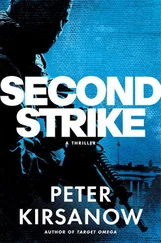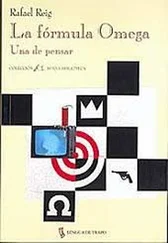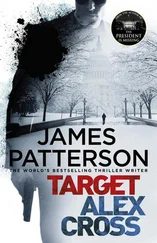“That’s not what those hips say. And those hips don’t lie.”
Garin shook his head. Laws was not just a character but, quite literally, an original.
One of the first members of First Special Forces Operational Detachment-Delta, colloquially known as Delta Force, he had been among the pioneers to guide the continued evolution of modern asymmetric warfare.
The process of developing specialized unconventional combat units had begun as early as World War II and continued through the early sixties. By the time of US involvement in Vietnam, American special operations forces were well established.
But the need for a hyper-elite quick-reaction force tasked solely with neutralizing catastrophic threats to US security became critically apparent after January 17, 1966. On that date a US Air Force B-52 collided with a tanker during a midflight refueling over the Mediterranean. The B-52 disintegrated in midair and the four Mk-28 hydrogen bombs it was carrying fell to earth near the coastal town of Palomares, Spain.
Conventional explosive material inside two of the bombs detonated, scattering metallic debris below. The radioactive remains were almost immediately recovered and secured.
A third bomb was recovered wholly intact within hours of the incident.
The fourth bomb, however, couldn’t be found.
Frantic, President Lyndon Baines Johnson ordered the deployment of scores of ships and planes, along with more than ten thousand troops, to search for the missing bomb. It took nearly three months before the fourth and final nuke was recovered in the Mediterranean at a depth of three thousand feet.
After an intense bout of awkward diplomacy with the Spanish government, the matter was quickly laid to rest.
Seemingly.
In fact, only one of the bombs reported destroyed by its conventional explosives had actually exploded. The other couldn’t be found. Thousands of American troops and dozens of planes and naval vessels quietly continued searching for the missing bomb.
Obviously, recovering an American nuclear weapon intact would have been a huge intelligence coup for the Soviets, who had learned from an asset in the US State Department that one bomb was still unaccounted for. So they, too, dispatched troops to find the bomb. But in contrast to the massive US deployment, the Soviets sent only a fifteen-man squad of specially trained Spetsnaz GRU commandos, guided by a handful of KGB analysts.
Five months after the accident, the Spetsnaz squad located the missing bomb in the hills of a sparsely populated coastal area south of Carboneras, about twenty miles from Palomares. Within twenty minutes of the discovery, more than two thousand US Marines had the Spetsnaz team surrounded.
After an extraordinarily tense standoff lasting several hours, and a flurry of urgent calls between the White House and the Kremlin, disaster was averted when the Soviets surrendered the nuke.
The incident became the subject of numerous analyses by the CIA and DIA, both of which were astonished that a small team of Soviet special operators was more effective at finding and securing the bomb than a much larger American force, a force that also had the advantage of knowing the area and general conditions in which the bombs were lost.
Reports were written, recommendations made. But they were shelved for nearly two decades. Then, in October 1986, a missile tube on a Soviet Navaga-class nuclear submarine exploded in the Atlantic approximately four hundred miles east of Bermuda. Several US naval vessels were dispatched to the area, but before they could reach the sub, it sank eighteen thousand feet beneath the surface with an estimated thirty nuclear warheads.
Neither the sub nor its arsenal of warheads was ever recovered.
Thereafter, President Ronald Reagan tasked Vice President George H.W. Bush, a former director of the CIA, with forming a quick-reaction force modeled after the Spetsnaz squad and designed to interdict, recover, and/or destroy any loose or rogue weapons of mass destruction — regardless of the source. The vice president tapped a highly regarded special operator, Lieutenant Colonel Clinton Laws, to spearhead the development, recruitment, and training of the force and, ultimately, to command it. Laws handpicked a diverse team of some of the best tier-one special operators in the US military, putting them through an ungodly eighteen-month training program at a four-thousand-acre southern Nevada compound affectionately called the Ranch, a tongue-in-cheek takeoff on the CIA’s own training facility in Camp Peary, Virginia, the Farm.
The process was arduous and consumed several years but took on greater urgency with the collapse of the Soviet Union and the nightmare possibility that nuclear weapons housed in former Soviet republics might be stolen by or sold to terrorists or state sponsors of terror.
Laws commanded the force for nearly a dozen years and upon his retirement continued to supervise training at the Ranch. The man he picked as his successor to head the team was killed under circumstances known only to the president and a few others. By then, Laws had already identified Mike Garin as the next leader of the team.
Laws ran both hands through his hair and sat back in his seat.
“Well, tell me about Pakistan, Chief.”
Garin registered only mild surprise. “Who says I was in Pakistan?”
“ The Washington Post, that’s who.” Laws pantomimed reading a newspaper. “Pakistani officials refused to comment on reports of an explosion and collapse of a tunnel at the nuclear facility in Wah Cantonment. The ISI, Pakistan’s intelligence agency, assures that there was no breach of the compound. Reports continued to emerge of numerous bodies being pulled from the debris, reports strongly denied by Pakistani sources.…”
“When did you begin reading The Washington Post ?” Garin asked.
“Opposition research, Chief.”
“No, I mean when did you begin reading?”
“Ho, he’s got jokes.” Laws casually scanned the premises. “I’m guessing those weren’t prairie dogs in that tunnel. So, should I assume you can neither confirm nor deny?”
“You know the protocols.”
“I wrote the protocols. So, I say again, tell me about Pakistan.”
“Check the after-action report. I’m sure Kessler would be happy to read you in.”
Laws frowned. “That little Kraut’s got no sense of gratitude. Every once in a while when he needs something, he’ll feed me some useless intel and claim it’s on an eyes-only basis. Usually nothing more important than directions to Burger King. But he acts like he just told me about the Manhattan Project. Other than that, the miniature little bastard treats me like a crazy uncle.”
“Smart man.”
“Not gonna throw me a bone, Chief? Something that’ll make an old dried-up operator feel warm and fuzzy? Lord knows with your repulsive face repellin’ the honeys, I’m not gettin’ any tonight.”
Garin smiled for the second time that night, a personal best. Laws was in some ways like an uncle, though far from crazy. He was something of a legend in the special ops community. Even though he’d been officially retired for more than a decade, the various US intelligence agencies still sought his advice and occasionally engaged more specialized services on a contract basis. He maintained an impressive network of contacts both overseas and domestic, well-placed individuals whom Laws had cultivated over several decades who would still return a favor thought long forgotten.
It wouldn’t surprise Garin that Laws knew there had been some type of recent operation in Pakistan, although he wouldn’t have gotten the information from Kessler. And he wouldn’t have known the specific purpose of the operation or any of its details. Laws thrived on such information, but he knew there was almost no likelihood he’d get it from Garin. It was, after all, Laws who had scouted Garin more than a dozen years ago. Laws had plucked the former Ivy Leaguer from the midst of SEAL Qualification Training and set him on a path only a handful of men had ever followed. It was Laws who had harnessed the volatile mix of testosterone and adrenaline within Garin and tempered it with appropriate measures of training and discipline, forging an especially lethal instrument to be unleashed in the war on terror. The training had been more important than the discipline. Indeed, Laws had already heard from Dan Dwyer, an Annapolis football coach, about Garin’s preternatural discipline. Many helped train Garin, but Laws was his mentor. And Garin was his prized pupil.
Читать дальше












